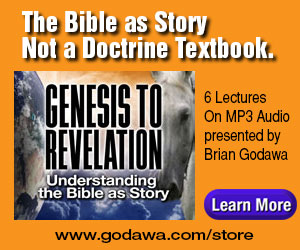Last post on this topic, we looked at 1 Peter 3:18-22 only to discover it is all about Jesus Christ going down into Hades to proclaim his victory of triumph over the spirits of the Watchers imprisoned in Tartarus of Hades.
But isn’t Hades just a synonym for being dead? Oh, it’s Biblically so much more than that. Let’s take a few posts to explore this Abode of the Dead from a Scriptural perspective.
When reading the word, Hades or Underworld, most educated readers immediately conjure images of Greco-Roman myth taught in school: A misty and gloomy abode of the dead below the earth where all souls of mortals, both good and evil, went after death. It is ruled over by the god of the same name, Hades, and contains perilous landscapes and dangerous bizarre creatures. Though there is not perfect consistency of geography among the various Greek and Roman authors, some elements repeat.[1]
There are five rivers in the classical Hades. Styx is the most prominent one that circles the underworld. The second one, Acheron, is the one crossed by souls on a boat ferried by the ghostly boatman Charon to bring them to the gates of Hades. Each of the rivers represent what happens to the departed souls.
1) Styx: River of hatred.
2) Acheron: River of pain.
3) Lethe: River of forgetfulness.
4) Phlegethon: River of fire.
5) Cocytus: River of wailing.
The entrance to the underworld is guarded by the three-headed dog Cerberus and other chimeric creatures like centaurs. The rivers then divide the geography into multiple regions with different purposes.
1) Fields of Punishment: Where souls who committed sins against the gods are punished.
2) Fields of Asphodel: Where souls go who were insignificant, neither great nor wicked.
3) Vale of Mourning: Where souls go who were unloved.
4) Elysium: Where the spirits of heroes and the virtuous ended up.
5) Isles of the Blessed: For the most distinguished of souls for eternity.
6) Tartarus: The deepest pit of Hades where the rebel Titans were bound.

Most modern western pictures of the afterlife, or realm of the dead, come from the medieval punishments of Dante’s Inferno and Milton’s Paradise Lost. Levels of torture for sinners meted out by angels or demons, with Lucifer reigning over hell as a more interesting character than God. Sadly, these unbiblical notions have influenced Christian theology in some ways more than the Scriptural text itself. They make for colorful stories, but are not true to Biblical theology.

What does the Bible itself say about the underworld? The Old Testament Hebrew equivalent to the Greek Hades was Sheol.[2] Sheol could be a metaphorical personification of death (Hos 13:14; Isa. 28:15; 38:18, Ps. 49:15) or the grave (Psa. 88:11; Isa. 14:9-11), but it could also refer to an actual conceived location beneath the earth that was the abode of the dead (Isa 14:9-15). The spirit of Samuel was called up from Sheol (1Sam. 28:13), and the sons of Korah went down alive into this underworld (Num. 16:33). People would not “fall alive” into death or the grave and then perish if Sheol was not a location to the ancient Hebrew mind.
When the prophet writes about Sheol in Isaiah 14, he combines the notion of the physical location of the dead body in the earth (v.11) with the location beneath the earth of the spirits of the dead (v.9). It’s really a both/and synthesis. The term includes several concepts of imagination.
Here are some verses that speak of Sheol geographically as a spiritual underworld below the earth in contrast with heaven as a spiritual overworld above the earth:
Amos 9:2
“If they dig into Sheol, from there shall my hand take them; if they climb up to heaven, from there I will bring them down.
Job 11:8
It is higher than heaven—what can you do? Deeper than Sheol—what can you know?
Psa. 139:8
If I ascend to heaven, you are there! If I make my bed in Sheol, you are there![3]
These are not mere references to the body in the grave, but to locations of the soul as well. Sheol is a multi-layered term that describes both the grave for the body and the underworld location of the departed souls of the dead.[4]
In Old Testament times, Sheol did not include any kind of punishment beyond its power to hold souls captive to death (Psa. 18:4-5), separated in some sense from God’s presence (Psa. 115:17; 6:5), and one’s misery of lost power and glory (Psa. 7:5; Isa. 14:9-16). But fire and bodily torture are absent from this Old Testament worldview.

Shades
One biblical term used for departed souls in Sheol is rephaim. It is sometimes translated as “shades,” in English. As the ISBE puts it, “In Job 26:5 “the shades below” are the dead (cf. Ps. 88:10; Isa. 26:14). They dwell in “the depths of Sheol” (Prov. 9:18), where they live together in “the assembly of the dead” (Prov. 21:16).”[5]
 That assembly is described in 1Enoch as “four hollows” or pits under the mountain of the dead, where they await their judgment in the last days. Though 1Enoch is not Scripture, it is a book highly regarded in the New Testament (read this article for the details), so it gives one picture of how the ancient Jews saw Sheol/Hades. One hollow is for the righteous; another hollow is for Abel and those unjustly murdered; a third is for the wicked unpunished in life; and a fourth for the wicked who were punished in life. The souls of the unrighteous dead thirst and are frightful of their future judgment (1En. 22:9), but they are not tortured by angels or demons. Righteous souls receive refreshment from a fountain of waters “with light upon them” (1En. 22:9; Luke 16:24).
That assembly is described in 1Enoch as “four hollows” or pits under the mountain of the dead, where they await their judgment in the last days. Though 1Enoch is not Scripture, it is a book highly regarded in the New Testament (read this article for the details), so it gives one picture of how the ancient Jews saw Sheol/Hades. One hollow is for the righteous; another hollow is for Abel and those unjustly murdered; a third is for the wicked unpunished in life; and a fourth for the wicked who were punished in life. The souls of the unrighteous dead thirst and are frightful of their future judgment (1En. 22:9), but they are not tortured by angels or demons. Righteous souls receive refreshment from a fountain of waters “with light upon them” (1En. 22:9; Luke 16:24).
Another Jewish text of the first century, 4Ezra, describes the departed soul’s entrance into Sheol as consisting of seven days to see the future results of their ways before being led to their habitation to wait for judgment. During this time period, the unrighteous…
4Ezra 7:80, 87, 101
…shall immediately wander about in torments, ever grieving and sad…they shall utterly waste away in confusion and be consumed with shame, and shall wither with fear at seeing the glory of the Most High before whom they sinned while they were alive, and before whom they are to be judged in the last times… and afterward they shall be gathered in their habitations.
Another ancient Christian text, The Apocalypse of Zephaniah, describes the angels who draw the shades to their destiny as beings whose “faces were like a leopard, their tusks being outside their mouth like the wild boars. Their eyes were mixed with blood. Their hair was loose like the hair of women, and fiery scourges were in their hands.”[6]
This ancient legendary depiction is behind the confused, wandering zombie-like shades in Jesus Triumphant who are animated by maggots and worms (Isa. 14:11; 66:24) while wailing and gnashing their teeth (Matt. 25:30), before being brought to the Mountain of the Dead by the long-haired gatherers. It’s all there in Jesus Triumphant.
In Isaiah 14, a prophetic rant against the arrogant king of Babylon, the “shades” take on an additional meaning…
Isaiah 14:9-11
Sheol beneath is stirred up to meet you when you come;
it rouses the shades (rephaim) to greet you, all who were leaders of the earth; it raises from their thrones all who were kings of the nations. All of them will answer and say to you: ‘You too have become as weak as we! You have become like us!’ Your pomp is brought down to Sheol.
The Hebrew word for “shades” here is rephaim, a word with ties to the Canaanite giants of Joshua’s and David’s time (Josh. 13:12; 2Sam. 22:15-22), and mighty warrior kings of Canaanite literature also called rephaim.[7] Isaiah’s intent is to mock the pomp and vainglory of man, who will end up as humiliated as every other mighty being imprisoned in Sheol.[8] Thus, the appearance of the Rephaim guardians in Jesus Triumphant.
In the next post we’ll address the New Testament notion of the underworld along with Gehenna and Hell.
You can buy Jesus Triumphant in Kindle, Paperback or audiobook here at Amazon.
For additional Biblical and historical research related to this novel, go to www.ChroniclesoftheNephilim.com under the menu listing, “Links” > Jesus Triumphant.

